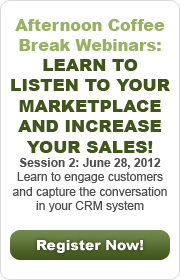We are often asked about helping our clients develop strategies for managing sales and use tax. This will be especially critical in 2010 as local governments are looking for missing revenue to help fill voids left by the recession. The sales tax compliance process is difficult to manage manually and businesses must be aware of the actions that lead to sales and use tax audits as state and local governments are increasing their audit numbers each year.
A few actions that can lead to sales and use tax audits include:
- No reporting or under reporting of sales and use tax
- Late reporting or filing of sales and use tax returns
- Reporting a large volume of exempt sales
- Having nexus obligations within a jurisdiction but not registering with that jurisdiction
- Follow up from a previous sales tax audit
How much does it cost you to maintain your compliance with sales tax? Would you like to reduce the cost of compliance by freeing up your business staff? You already know you are obligated to collect and remit sales tax where you conduct business. Defining where you conduct business can be a big challenge. Are you familiar with the word nexus and are you aware of what it means for your business? If not, you can be assured the taxman will explain it after your next audit. Nexus is the obligation to collect and remit tax where you conduct business. Understanding your business’s nexus is the first step in leveling the taxation playing field.
Almost every business has to calculate, collect, report and remit taxes. You are most likely already paying taxes in your state and local jurisdictions as a result of the location of your business. However, what happens in the situation when you sell something across state lines? Are you supposed to collect sales tax? How much sales tax should you collect? And to whom should you remit the tax? Simply making a sale in another state does not necessarily mean you have a sales tax obligation. There are many rules involved with determining nexus that you must consider. These rules are created by the states and define when a business has a connection to that state. This “connection” is also known as nexus.
Nexus rules differ from state to state and when deciding how a rule applies to you, you should consult your accountant, tax attorney or other qualified sales tax professional to conduct a nexus study for your particular business. Making the nexus determination on your own is foolish and can cause problems further down the road. When you have created nexus in a state, you are required to calculate, collect, report and remit that state’s sales taxes each and every time you make a transaction there. The physical structure of where your business is located creates nexus, although there are several other ways nexus can be determined and/or created.
The most obvious example of nexus is when your business has stores in multiple states. You have sales tax obligations in each location. You can create nexus by employing sales people who travel to and sell in other states. If your employees or contractors conduct any work such as installing products at a customer’s out-of-state location, you may have nexus there as well. In some states, it’s possible for nexus to be in existence just by regularly attending tradeshows or advertising in other jurisdictions other than the physical location of your business. Additional factors that can create nexus include: owning or leasing any real or personal property in another state, having company personnel deliver products in another state, and renting or owning out-of-state storage, warehousing or drop-shipping facilities.
The world of sales tax is full of complicated rules and this is not a game where you want to take big risks. With more than 12,500 tax regions across North America, and with rates and boundaries constantly changing, staying on top of your nexus responsibilities requires labor and a lot of time. In addition, self management of your nexus responsibilities does not generate revenue to your business, nor does it cut costs. Managing nexus is a serious time and resource drain to your business all around.
Businesses attempting to manage sales tax compliance processes know it is cumbersome, expensive, a drain on productivity, and error prone. Sales tax may be inevitable, but the hassle is not. There are solutions to help achieve accuracy and compliance painlessly and affordably. Selecting a Web-service-based sales tax management solution that runs behind the scenes of your accounting application to automate the sales tax compliance function for your business is a move in the right direction. The solution you select is critical. Every business needs to be aware, the service should not only work behind the scenes, integrate with the business accounting application and CRM application, but it should also completely automate the tax compliance functions of the entire business. In addition, the solution you select should also maintain jurisdiction updates and changes, as well as rate calculations. Finally, a comprehensive solution should also provide collection, reporting functionality, return preparation, and remittance of the return at the appropriate deadline.
Don’t waste additional time on manual compliance efforts; instead learn how your business resources can focus on revenue generating activities. Contact us to gain the knowledge necessary to achieve compliance and reduce your exposure to suffering penalties from an audit.



 Download our corporate brochure for more facts about us, our
clients and our solutions.
Download our corporate brochure for more facts about us, our
clients and our solutions.
 Driving Revenue Growth 1
Driving Revenue Growth 1 Satisfying Customers 1
Satisfying Customers 1